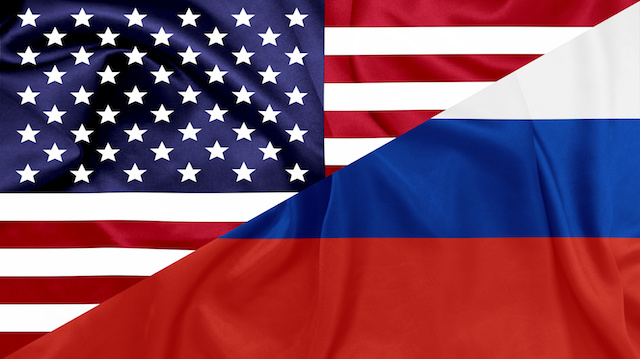
Anyone who crawled under a desk for bomb raid drills remembers what life was like during the Cold War. The extent to which both the U.S. and the former Soviet Union were willing to go has been shrouded in mystery, until now. The National Archives and Records Administration has just released a detailed record of U.S.-targeted Soviet sites from 1959. They reveal that the United States was ready to destroy the world if necessary.
The Cold War
During World War II, the United States fought alongside several allies, including the Soviet Union, to defeat the Axis powers of Germany, Italy and Japan. The tense relationship between the U.S. and the former U.S.S.R. was founded on the basic philosophy that “the enemy of my enemy is my friend.” Nevertheless, Soviet leader Joseph Stalin was tyrannical, self-interested, and had an eye for Communist expansion into Eastern Europe during and after the Second World War.
The U.S. was fully aware of Stalin’s ambitions and in the years following WWII sought to contain Communism. America also largely failed to recognize the Soviets as a legitimate world power.
The U.S. had nuclear capabilities, as had been demonstrated in Japan with the atomic bombings of Hiroshima and Nagasaki in 1945 that ended the war. One unexpected outcome of those bombings was a post-war arms race. The Soviets soon tested their own atom bomb, in 1949, and President Harry Truman announced the building of the even more destructive hydrogen “superbomb” in response. Predictably, the Soviets resolved to do the same.
The arms race eventually extended into a space race, a drive for technological dominance, which culminated with the U.S. moon landing, but didn’t stop there. Historians generally agree that the end of the Cold War did not come until the economic collapse of the Soviet Union itself in 1991, and we still see Cold War tensions simmering today as U.S. presidents alternate between cooperating with or opposing Vladimir Putin’s idealized vision of Mother Russia.
U.S. Cold War target lists declassified
In 2006, journalist Michael Dobbs filed a request with the National Archives and Records Administration to declassify the SAC [Strategic Air Command] Atomic Weapons Requirements Study for 1959, and his request was finally granted with the release of the study this past December.
The SAC study is unsurprising in one respect: Of course, military planners were targeting sites in case we needed to launch an attack on the Soviet Union. Tensions were such that the identification of strategic sites was not an unreasonable move. Some of the details, however, are somewhat surprising.
Not only do the targets include areas that would expose “civilians and ‘friendly forces and people’ to high levels of deadly radioactive fallout,” according to a press release accompanying the study, but “the authors developed a plan of the ‘systematic destruction’ of Soviet bloc urban-industrial targets that specifically and explicitly targeted ‘population’ in all cities.” These cities included some obvious Russian targets, like Moscow and Leningrad, but also far distant and non-Russian cities of Beijing, East Berlin and Warsaw.
As senior analyst William Burr writes, such targeting violated the norms that dictated international military conflicts, namely rules in place to minimize collateral damage. In fact, the study suggests that collateral damage was a key goal in selecting these targets. And the number of individual targets is mind-blowing: 179 were in Moscow alone, and 145 in Leningrad.
 While the primary goal of the military’s target study was to neutralize Soviet air power, the authors also included plans for “final blows” should the strike on Soviet air forces fail to stop the fighting. These final blows would have used bombs eight times greater than the “Little Boy” bomb that landed on Hiroshima, Japan, a truly devastating impact.
While the primary goal of the military’s target study was to neutralize Soviet air power, the authors also included plans for “final blows” should the strike on Soviet air forces fail to stop the fighting. These final blows would have used bombs eight times greater than the “Little Boy” bomb that landed on Hiroshima, Japan, a truly devastating impact.
Mutually assured destruction saved us
When we look back on decisions made by the government in decades past, it is easy to be critical. However, fear of mutually assured destruction (MAD) ruled our interactions with the Soviets during the Cold War and does so even today, decades later. Although evidence now finds that the U.S. overestimated Soviet aggressiveness, the reigning idea was that if one country initiated nuclear bombing, the other would respond in kind, thereby assuring mutual destruction of both the U.S. and the U.S.S.R., not to mention the world.
Today, the threat of nuclear war continues to animate the narrative of global peace. One of these days, this may not be the case. Until then, we continue to operate under the assumption that, depending on who is involved in a conflict, we have the ability to wipe each other off the face of the Earth. Now we know, at one time in history, our military was willing to do just that.
—Megan Winkler
Megan Winkler is an author, historian, Neurosculpting® meditation coach, certified nutritional consultant and DIY diva. When she’s not writing or teaching a class, Megan can be found in the water, on a yoga mat, learning a new instrument or singing karaoke. Her passion for a healthy mind-body-spirit relationship motivates her to explore all the natural world has to offer.
Sources:
http://www.history.com/topics/cold-war/cold-war-history
http://nsarchive.gwu.edu/nukevault/ebb538-Cold-War-Nuclear-Target-List-Declassified-First-Ever
http://www.cnn.com/2015/12/23/politics/cold-war-u-s-nuclear-target-list/index.html
https://nsarchive.wordpress.com/2015/12/15/1974-u-s-war-game-launched-54-nuclear-weapons-in-iran-to-save-country-from-soviet-invasion-according-to-declassified-document-in-new-national-security-archive-publication
http://nsarchive.gwu.edu/nukevault/ebb285

